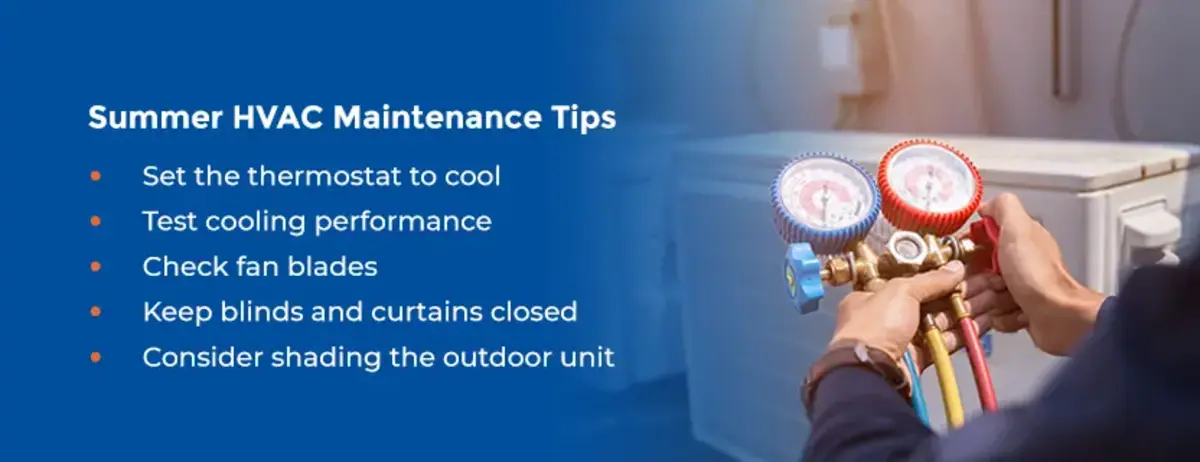As temperatures rise, HVAC systems become the unsung heroes of homes and buildings. But without proper maintenance, even the most advanced air conditioning units can fail when you need them most. This guide will walk you through essential summer HVAC maintenance steps to ensure your AC is prepared for the heat ahead. Whether you’re a homeowner or a building manager, now is the time to act.
Why Summer HVAC Maintenance Matters
When demand for cooling spikes, HVAC systems are pushed to their limits. Poorly maintained units struggle with performance, consume more energy, and are prone to breakdowns. Regular maintenance ensures efficient operation, extends equipment life, and keeps energy costs under control.
Neglecting routine upkeep can lead to:
- Reduced cooling capacity
- Higher energy bills
- Poor indoor air quality
- Emergency repair costs
Preventive HVAC maintenance is more than a checklist; it’s a smart investment.
Start With a Full System Inspection
Professional HVAC technicians begin summer maintenance with a comprehensive system check. Key inspection points include:
- Thermostat calibration
- Airflow assessment
- Electrical connections
- Refrigerant level check
- Coil cleanliness
- Duct integrity
This inspection identifies hidden issues that could lead to mid-summer breakdowns. For commercial buildings, this step is critical to ensure compliance with building codes and maintain tenant satisfaction.
Clean or Replace Air Filters
Clogged filters are one of the most common causes of HVAC inefficiency. Dirty filters restrict airflow, making your system work harder to circulate cool air. This reduces performance and increases energy consumption.
Change filters every 1-3 months during peak usage periods. For facilities with high occupancy or dust levels, consider using high-efficiency particulate air (HEPA) filters.
Check and Seal Ductwork
Air loss from duct leaks can result in as much as 30% of your conditioned air being wasted. Inspect all accessible ducts for visible signs of damage, disconnects, or dirt accumulation. Use mastic sealant or metal tape to patch leaks.
In larger buildings, consider a professional duct pressurization test to locate hidden leaks. Sealing ducts not only improves cooling efficiency but also enhances indoor air quality.
Clear Debris Around Outdoor Units
The outdoor condenser unit needs clear space to operate efficiently. Remove any leaves, branches, or debris within two feet of the unit. Cut back surrounding vegetation and make sure the condenser coils are free of dirt and blockages.
Accumulated dirt on coils hinders heat exchange and may cause the system to overheat.. Use a coil cleaner or schedule professional coil cleaning as part of your seasonal tune-up.
Test the Thermostat
Your thermostat is the command center for your HVAC system. Make sure it’s functioning correctly and consider upgrading to a smart thermostat for better control and efficiency.
Smart thermostats allow remote monitoring, learning-based programming, and energy usage reports. For property managers, this is a powerful tool to optimize energy consumption across multiple units.
Inspect and Clean Drain Lines
The condensate drain removes moisture collected from the air. Over time, algae and debris can clog the line, leading to leaks or water damage.
Flush the drain with a vinegar solution and check for any blockages. Verify that the drain pan is undamaged and functioning correctly to channel water away.
Schedule Professional HVAC Maintenance
While some tasks can be handled by homeowners, many require professional expertise. Scheduling annual maintenance with a licensed HVAC contractor is the best way to ensure comprehensive care.
Look for service providers who:
- Are licensed and insured
- Offer service plans or seasonal tune-up packages
- Use diagnostic tools to identify hidden problems
Numerous HVAC providers offer service agreements with priority scheduling and reduced repair costs, ensuring comfort and reassurance during the summer months.
Focus on Product Performance
Investing in high-quality HVAC products is just as important as maintenance. Today’s energy-efficient systems, such as variable-speed compressors and smart zoning solutions, can significantly reduce cooling costs.
If your unit is over 10-15 years old, upgrading to a modern, energy-efficient model could yield immediate savings. Look for ENERGY STAR-certified products and consult with your HVAC provider for recommendations tailored to your building or home.
Final Thoughts
Summer HVAC maintenance isn’t just a seasonal chore—it’s a critical step in preserving comfort, efficiency, and safety. By taking a proactive approach, homeowners and facility managers can prevent costly issues and ensure their systems run smoothly all season long.
With regular inspections, timely filter replacements, and professional support, your air conditioning system will be ready to take on the heat. Don’t wait until the peak of summer to find out your AC wasn’t up to the task.
Is your HVAC system ready? Schedule your summer tune-up today – visit service ac jakarta selatan.
